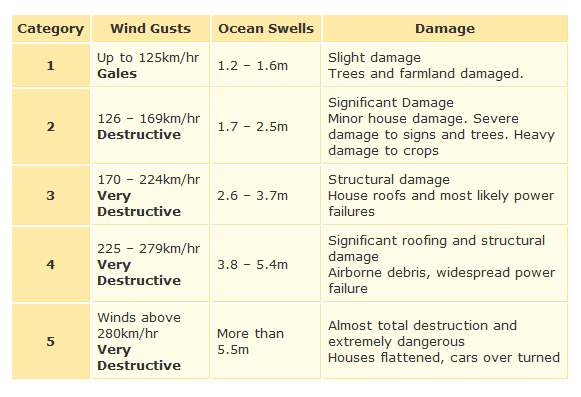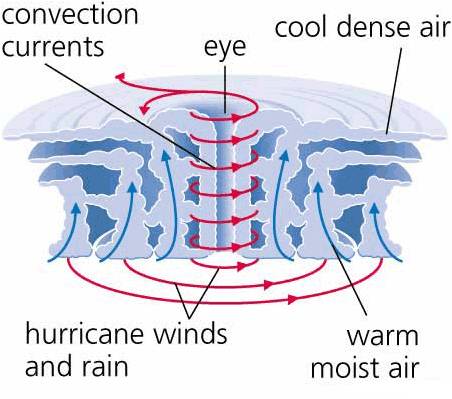Areas situated in the zone between the Tropics of Cancer and Capricorn are naturally prone to these natural disasters. In this region, it is more likely for the high temperature of the ocean to cause water to evaporate. In order for a cyclone to form, it is required to have two main factors in the weather which are:
- The ocean water must be at least 26°C.
- The atmosphere must have a low air pressure
- A thunderstorm needs to be produced
The condensation of the evaporated water leads to the formation of clouds. During this process, heat is emitted and a reaction between the moisture from the evaporation of water takes place. Thunderstorms are produced and subsequently, if low air pressure is in the atmosphere, clouds will begin to rotate due to the Earth spinning on its axis. This causes thunderstorms to spin in a circular motion and a cyclone is created.
Cyclones have two types of gale-force winds at the eye and they are known as sustained winds and gusts. Sustained winds can have a speed of 63km/h or more and gusts surpass the speed of 90km/h.
These winds have a life-span of at least six hours. The winds are capable of extending over hundreds of kilometres from the centre of the cyclone. A tropical cyclone will be classified as severe if the sustained winds exceed 118km/h and the gusts are over 165km/h.
The eye of a tropical cyclone is surrounded by a dense circular formation of cloud which is approximately 16km high. This ring of cloud is known as the eye wall which contains the strongest winds and produces the heaviest rainfall.
Tropical cyclones acquire energy through the temperatures of the sea-surface which means that they disappear when they encounter land or colder water. Tropical Cyclones can persist for an average of a week.
Tropical Cyclones generate floods, storms and destructive winds. Its winds can damage the property and houses of residents and airborne debris can become potential danger. The heavy rainfall produced from the eye-wall is capable of causing severe floods. Floods can cause more destruction and deaths.
The winds can produce generate storm surges which is a sudden rise of seal-level near the shore caused by cyclones. The sea water inundates low-lying coastal areas and this can lead to erosion of embankments, destruction of vegetation and infertility of soil. Strong winds damage communication systems for distress mitigation which makes it more difficult to alert people in the area of danger.
Storm surges may contaminate drinking water which can cause an outbreak of disease. After the cyclone passes, roads can still be flooded which can cause problems for residents to travel to dry areas.



